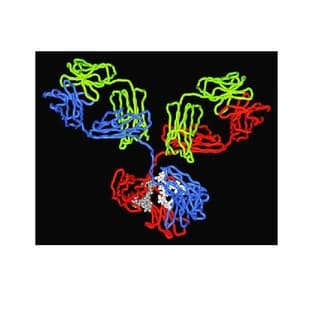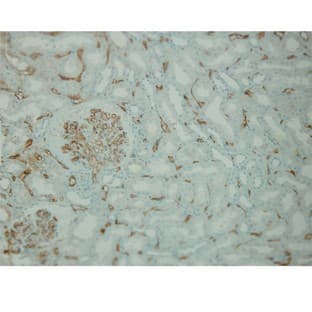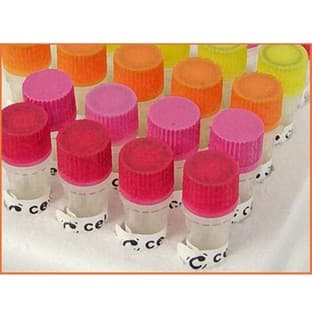
Supplier:
Aviva Systems Biology IncorporatedPCP (Phencyclidine / 1-(1-phencyclohexyl) piperidine) Antibody (Clone #: 6E7)(100ug)
Prices direct from Aviva Systems Biology Incorporated
Quick response times
Exclusive Absave savings/discounts
SPECIFICATIONS
Size
100ug
Applications
WB
Hosts
Mouse
Format
Lyophilized powder
Presku
AMM00035
Target
1-(1-phencyclohexyl) piperidine, known as Phencyclidine, was developed in 1926 as a surgical anesthetic. Its development in human was discontinued in 1965 due to its severe adverse effects. At low to moderate doses, PCP increases breathing rate, blood pressure and pulse rate. Generalized numbness of the extremities and loss of muscular coordination also may occur. Psychological effects include distinct changes in body awareness. High dose PCP decreases blood pressure, pulse rate, and respiration. This may be accompanied by nausea, vomiting, blurred vision, flicking up and down of the eyes, drooling, loss of balance, and dizziness. Psychological effects at high doses include illusions and hallucinations. High doses of PCP can also cause seizures, coma, and death. High doses can cause symptoms that mimic schizophrenia, such as delusions, hallucinations, paranoia, disordered thinking, a sensation of distance from one's environment, and catatonia. Speech is often sparse and garbled. People who use PCP for long periods report memory loss, difficulties with speech and thinking, depression, and weight loss. These symptoms can persist up to a year after stopping PCP use. Mood disorders also have been reported. PCP has sedative effects, and interactions with other central nervous system depressants, such as alcohol and benzodiazepines, can lead to coma.
Isotype
Mouse IgG
Applications
ELISA, WB
Hosts
Mouse
Applications
IHC
Hosts
Mouse
Latest promotions
Buy any polyclonal or monoclonal antibody from our extensive range of pre-made antibodies and for a limited time only receive a $50 discount!(T&C apply:...
New brilliant antibodies, and new lower prices!For flow cytometry reagents in general, \"bright is better.\" The violet-excitable BD Horizon™ BV421 and...
We're so sure that you'll prefer Cayman Assay kits over your present brand that we're willing to give you a free assay kit to prove it!
For the past decade scientists have extensively used ATS secondary toxin conjugates to make their own targeted toxins for in vitro use.The ability to combine...
10% Discount on 2 Rabbit Polyclonal Antibody Service. With over 20 years experience, SDIX has developed into the premier US custom antibody producer,...
Did your supplier increase the price of Fetal Bovine Serum? Did they substitute the US Origin with USDA? Well say no more! Innovative Research is still...
Bulk Cytokines with Custom Vialing.20 - 50% off cytokines, growth factors, chemokines and more...For a limited time Cell Sciences is offering substantial...
Are you planning to have a customised antibody made for your research?Since 2000, Everest has been producing a catalog containing thousands of affinity...
Top suppliers
Agrisera AB
11 products
Biotrend
Biosensis
969 products
ABBIOTEC
3011 products
SDIX
1 products
Spring Bioscience
2291 products
Cell Signaling Technology
4976 products
Rockland Immunochemicals, Inc.
7592 products
Boster Immunoleader
1533 products
OriGene Technologies Inc.
5281 products
Maine Biotechnology Services
227 products
BD (Becton, Dickinson and Company)
1 products
ABNOVA CORPORATION
Randox Life Sciences
1502 products















